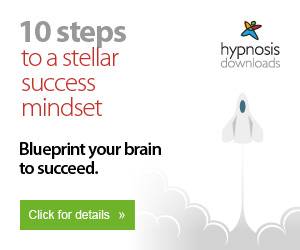Welcome to a journey into the ancient wisdom of stoicism. In today’s fast-paced and unpredictable world, leaders face numerous challenges that require resilience, effective decision-making, and moral guidance.
Drawing from stoic philosophy, leaders can find valuable principles, practices, and virtues to navigate these challenges and achieve success.
Stoicism, a school of thought founded in ancient Greece, teaches individuals to cultivate a stoic mindset and prioritize virtues such as wisdom, courage, and justice. By embracing stoic beliefs and teachings, leaders can develop the inner strength necessary to lead with integrity and make sound decisions even in the face of adversity.
Key Takeaways:
- Stoicism offers valuable insights and practices for modern leaders, including emotional resilience and rational decision-making.
- By focusing on what is within their control, stoic leaders can navigate unpredictable environments and make meaningful progress.
- Stoic philosophy promotes adaptability, humility, and leading by example, fostering strong collaborative relationships within teams.
- Stoic leaders exhibit virtues such as trust, integrity, and a commitment to the common good, inspiring their teams to achieve greatness.
- The enduring relevance of stoicism reminds us of the power of self-control, moral guidance, and resilience in achieving sustainable success.
Emotional Resilience: Navigating High-Pressure Situations with Stoicism
Stoicism teaches us that our emotions are not solely determined by external events but are influenced by our judgments and interpretations. By developing an awareness of our cognitive processes, we can effectively manage our emotional reactions and cultivate emotional resilience in high-pressure situations.
One powerful Stoic practice that helps leaders maintain composure is negative visualization. This practice involves envisioning worst-case scenarios, preparing ourselves for adversity. By mentally preparing for challenging situations, we are better equipped to respond proactively and with clarity of mind.
“The obstacle is the way.” – Marcus Aurelius
Through negative visualization, leaders can anticipate obstacles, identify potential solutions, and develop a solution-oriented mindset. This mindset allows us to focus on finding practical solutions rather than getting overwhelmed by the challenges we face.
As leaders, it is essential to recognize that emotional resilience is not about suppressing our emotions but rather understanding and effectively managing them. By practicing Stoicism and adopting a proactive mindset, we can navigate high-pressure situations with poise and lead our teams to success.
Focus on What You Can Control: Stoic Leadership in an Unpredictable World
Stoicism, with its profound wisdom and practical teachings, provides valuable guidance for leaders facing unpredictable challenges. One of the core principles of Stoicism is the recognition of what is within our control and what is not.
Stoic leaders understand that focusing on what they can control empowers them to take decisive action and drive meaningful progress.
By directing their energy towards actionable items, Stoic leaders harness their capabilities and resources to tackle the obstacles they encounter. They accept the reality of external circumstances beyond their control and choose to focus on what they can influence. This mindset enables them to lead with clarity, purpose, and resilience, even in a rapidly changing world.
Stoic leaders, such as Admiral James Stockdale and Jeff Bezos, embody the principle of focusing on what they can control. Despite enduring immense challenges and adversity, they remained steadfast in their commitment to achieving meaningful progress.
Their unwavering focus allowed them to navigate uncertain waters, adapt to shifting environments, and inspire their teams to persevere.
“The key is taking responsibility and initiative, deciding what your life is about, and prioritizing your life around the most important things.” – Stephen Covey
Table: Stoic Leadership in Action
| Stoic Leader | Focus on What They Can Control | Achievements |
|---|---|---|
| Admiral James Stockdale | Embraced the challenges of captivity. | Provided moral guidance to fellow prisoners of war and maintained resilience throughout his captivity. |
| Jeff Bezos | Directed energy towards customer satisfaction and innovation. | Built Amazon into one of the world’s most successful companies and transformed multiple industries. |

Stoic leaders understand that while there are external circumstances beyond their control, they have the power to choose their response and their focus.
By concentrating on actionable items, accepting the uncontrollable, and directing their energy towards achieving meaningful progress, they exemplify the essence of Stoic leadership.
Rational Decision-Making: Using Stoic Principles to Make Informed Choices
In the realm of leadership, rational thinking and logic play pivotal roles in the decision-making process. Stoicism, an ancient philosophy that advocates for reasoned analysis, offers valuable insights that can guide leaders in making informed choices.
By applying a Stoic approach to decision-making, leaders can weigh the pros and cons objectively, considering various perspectives and possible outcomes.
This rational mindset helps leaders to navigate complexity and uncertainty with clarity and precision, ensuring that decisions align with the goals and values of their organizations.
By making informed choices, leaders foster trust among team members and establish a solid foundation for collaboration and success.
Jeff Bezos: A Stoic Leader in Action
“Number one, I know that I won’t regret trying and failing. And number two, I feel enormously grateful for the risks that I’ve taken and the failures that I’ve had because they’ve allowed me to be successful at what I do.”
Jeff Bezos, the founder of Amazon, exemplifies a Stoic leader who embodies rational decision-making. His bold decisions, such as expanding Amazon’s services and investing in long-term goals, have been driven by a thoughtful analysis of risks and rewards.
Bezos’s strategic thinking and ability to make informed choices have contributed to Amazon’s remarkable growth and success.
Benefits of Rational Decision-Making in Leadership
| Benefits | Description |
|---|---|
| Alignment with Goals | Leaders who make informed choices ensure that decisions align with their organization’s goals and values. |
| Trust Building | By considering various perspectives and objectively weighing pros and cons, leaders foster trust among team members. |
| Clarity and Precision | Rational thinking provides leaders with clarity and precision in complex and uncertain situations. |
| Effective Problem-Solving | Stoic principles guide leaders in analyzing problems and identifying logical solutions. |
| Resilience | Objective analysis and logical decision-making equip leaders with the resilience to face challenges head-on. |
Achieving Informed Choices through Rational Thinking
To make informed choices, leaders can adopt a rational thinking process that incorporates Stoic principles:
- Objective Analysis: Evaluate the facts, data, and potential consequences objectively, avoiding emotional biases and preconceived notions.
- Perspective-Taking: Consider various perspectives and viewpoints to gain a comprehensive understanding of the situation.
- Logical Reasoning: Apply deductive and inductive reasoning to analyze the available information and identify the most plausible and viable options.
- Consideration of Outcomes: Anticipate the potential outcomes and consequences of each choice, carefully weighing the risks and rewards.
- Bias Awareness: Be conscious of cognitive biases and strive to mitigate their influence when evaluating options and making decisions.
By leveraging these rational thinking practices, leaders can ensure that their decision-making process is well-informed and guided by logic, ultimately leading to better outcomes for their organizations and teams.
Adaptability: Navigating Change with Stoic Principles
Stoicism teaches us the importance of adaptability in navigating the ever-changing landscapes of life. The acceptance of impermanence is a fundamental principle that Stoic leaders embrace to weather the storms of uncertainty and seize new opportunities.
Responding to changing environments requires a resilient mindset and a willingness to embrace the unknown.
One inspiring example of a Stoic leader who displayed remarkable adaptability is Sir Ernest Shackleton. Known for his leadership during the Imperial Trans-Antarctic Expedition, Shackleton led his crew through unimaginable adversity and navigated through treacherous conditions.
His ability to adapt to the unpredictable challenges of the Antarctic showcased the power of Stoic principles in action.
By embodying the Stoic virtues of fortitude and resilience, leaders can confront change head-on, while maintaining a steady course in the face of uncertainty.
It is through this adaptability that leaders can respond to emerging opportunities and effectively address threats, ensuring their organizations thrive even in the most turbulent times.
“Success is not final, failure is not fatal: It is the courage to continue that counts.” – Winston Churchill
In our rapidly changing world, leaders who have embraced Stoic principles possess the inner strength and adaptability necessary to navigate the evolving landscapes of their industries.
They recognize that change is inevitable and approach it with an open mind, ready to seize new opportunities and protect their organizations from potential threats.
Stay tuned for the next section, where we explore the significance of humility and empathy in Stoic leadership, and how they foster collaboration and strong relationships in the modern workplace.

Humility and Empathy: Stoic Leadership in a Collaborative Environment
In the realm of stoicism, humility and empathy are essential virtues that distinguish great leaders from merely competent ones. By practicing humility and empathy, Stoic leaders establish a collaborative environment that fosters trust, cooperation, and the development of strong relationships.
One powerful way Stoicism encourages practitioners to cultivate humility and empathy is through the contemplation of memento mori, the reminder of one’s mortality.
Reflecting on the inevitability of death humbles individuals, reminding them of their impermanence and the transitory nature of life. This practice instills a sense of humility as leaders recognize their limitations and treat others with genuine respect and empathy.
“Do not act as though you had ten thousand years to live. The inescapable mortality rate hangs over everything you do. It equals the playing field, making it impossible to take anyone’s status for granted. We all share the same end, regardless of our earthly achievements or possessions.”
Collaboration lies at the heart of Stoic leadership. Stoic leaders understand the significance of working together with their team members to achieve shared goals. They foster an inclusive environment that values diverse perspectives, encourages open communication, and nurtures a sense of belonging.
When collaborating, Stoic leaders prioritize active listening and seek to understand the needs and motivations of their team members. This empathetic approach allows them to build strong relationships based on trust, respect, and mutual support.
By creating an atmosphere of psychological safety, Stoic leaders empower their teams to contribute their unique talents and perspectives.
Amidst the collaborative environment they create, Stoic leaders leverage the strengths of their team members and encourage each individual to reach their full potential. They optimize collaboration by promoting a culture of continuous learning, where mistakes are seen as opportunities for growth and personal development.
Example: Marcus Aurelius
Marcus Aurelius, a Roman emperor and acclaimed Stoic philosopher, exemplified the virtues of humility and empathy in his leadership. Despite his esteemed position, Aurelius treated his subordinates with respect and dignity.
He believed in leading by example, employing a leadership style that prioritized collaboration and strong relationships.
Aurelius’s humility allowed him to acknowledge his own fallibility and embrace the input of others. He leveraged empathy to understand the needs and concerns of his people, implementing policies that promoted their well-being and the greater good of the Roman Empire.
| Advantages of Humility and Empathy in Collaborative Leadership | Examples in Stoic Leadership |
|---|---|
| 1. Fosters trust and psychological safety | Marcus Aurelius prioritizing the well-being of his subordinates |
| 2. Enhances communication and collaboration | Admiral James Stockdale fostering open dialogue with his crew members |
| 3. Promotes diversity of thought and perspectives | Sir Ernest Shackleton valuing the contributions of all expedition members |
| 4. Builds strong relationships and a sense of belonging | Nelson Mandela forging connections with his fellow anti-apartheid activists |
| 5. Empowers individuals to reach their full potential | Jeff Bezos encouraging innovation and personal growth at Amazon |
The principles of humility and empathy resonate strongly with Stoic leadership, emphasizing the importance of collaboration and strong relationships. By embracing these virtues, leaders can create a harmonious and inclusive environment where each team member feels valued, supported, and empowered to contribute their best.
Leading by Example: Stoic Virtues in Action
Stoicism emphasizes the importance of living virtuously and cultivating inner strength. By exemplifying stoic virtues, leaders inspire trust and respect from their teams. Demonstrating unwavering integrity, self-discipline, and a commitment to the common good, these leaders set a powerful example for future generations.
One such leader who embodied stoic values is George Washington, the first President of the United States. Throughout his life, Washington displayed an unwavering commitment to virtue, leading by example and earning the trust of those around him.
His dedication to the common good and the principles of integrity helped establish a strong foundation for the newly formed nation.
“Be courteous to all, but intimate with few, and let those few be well tried before you give them your confidence. True friendship is a plant of slow growth, and must undergo and withstand the shocks of adversity before it is entitled to the appellation.”
– George Washington
Washington’s stoic leadership style emphasized the importance of moral character and virtuous behavior. His commitment to leading by example created a culture of trust and inspired his fellow citizens to strive for greatness.
Whether in business, politics, or any other field, leaders who embody stoic virtues leave a lasting impact. By prioritizing the common good, maintaining integrity, and demonstrating self-discipline, these individuals create a foundation of trust that fosters collaboration and inspires others to follow suit.
Conclusion: The Enduring Relevance of Stoicism in Modern Leadership
Stoicism, with its ancient wisdom and timeless principles, holds valuable insights for modern leaders seeking success in a rapidly changing world.
By embracing the tenets of stoicism, such as emotional resilience, rational decision-making, adaptability, humility, and leading by example, leaders can transform their approach and elevate their effectiveness in navigating challenges and achieving sustainable success.
Incorporating stoic teachings into leadership styles allows individuals to develop emotional resilience, enabling them to stay calm and composed in high-pressure situations.
By practicing rational decision-making based on the stoic philosophy of weighing the pros and cons objectively, leaders can make informed choices that align with their organization’s goals and values.
Moreover, stoicism emphasizes adaptability and the acceptance of impermanence, enabling leaders to navigate rapidly changing environments and respond effectively to emerging opportunities and threats.
Stoic leaders understand the importance of humility and empathy, building strong collaborative environments by treating their team members with respect and dignity.
Leading by example and embodying stoic virtues of integrity, self-discipline, and commitment to the common good, leaders inspire trust and admiration from their teams.
By adopting stoicism’s emphasis on self-control and virtue, individuals can effectively manage stress and improve their overall well-being, ensuring they can weather life’s challenges while maintaining their focus on success.
FAQ
What is stoicism?
Stoicism is an ancient philosophical school of thought that teaches individuals how to live virtuous and fulfilling lives by focusing on what is within their control and accepting external circumstances.
How can stoicism benefit leaders?
Stoicism offers valuable insights and practices for leaders, including developing emotional resilience, making informed and rational decisions, adapting to change, cultivating humility and empathy, and leading by example.
What is negative visualization?
Negative visualization is a Stoic practice that involves envisioning worst-case scenarios to prepare for adversity. By mentally rehearsing challenging situations, leaders can maintain composure and respond proactively.
How does stoicism help leaders in navigating unpredictable situations?
Stoicism teaches leaders to focus on actionable items within their control and accept external circumstances beyond their control. By directing their energy towards achieving meaningful progress, leaders can navigate unpredictable situations effectively.
How does stoicism promote rational decision-making?
Stoicism emphasizes rational thinking and logic in decision-making. By considering various perspectives, weighing pros and cons objectively, and aligning choices with organizational goals and values, leaders can make informed decisions that foster trust among team members.
How does stoicism encourage adaptability?
Stoicism teaches the importance of accepting the impermanence of life and navigating change. Stoic leaders embrace rapidly shifting environments, respond to emerging opportunities and threats, and make adjustments to achieve success.
How does stoicism promote humility and empathy in leaders?
Stoicism encourages leaders to contemplate their mortality through the practice of memento mori. By recognizing the fragility of life, leaders develop humility and empathy, fostering collaboration and strong relationships with team members.
How can stoic virtues be applied in leadership?
Stoic virtues such as integrity, self-discipline, and commitment to the common good inspire trust and respect from team members. Leaders who embody these virtues lead by example and set a moral standard for their teams.
Is stoicism relevant in modern leadership?
Yes, stoicism offers a powerful framework for modern leaders. Its emphasis on emotional resilience, rational decision-making, adaptability, humility, and leading by example equips leaders with the tools to navigate challenges, build strong teams, and achieve sustainable success.









